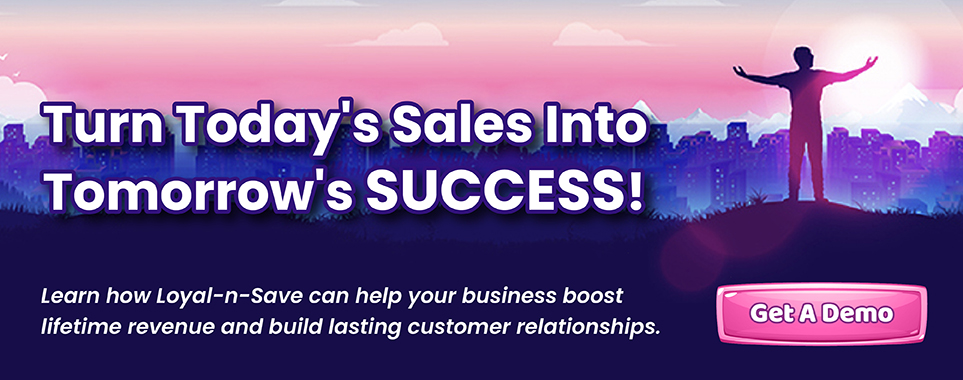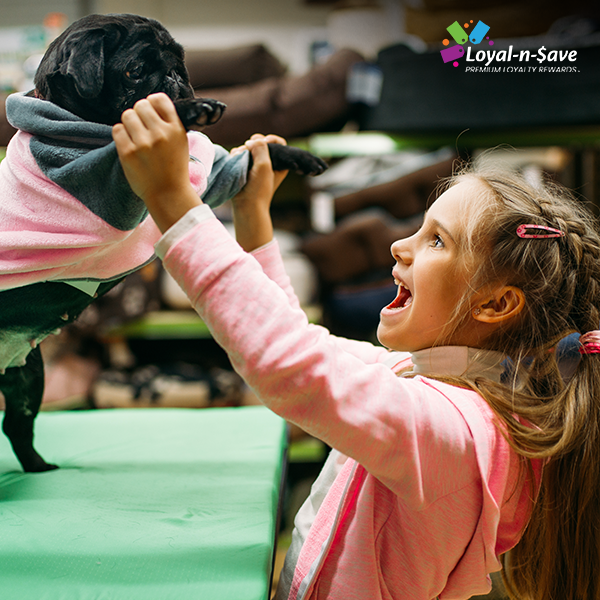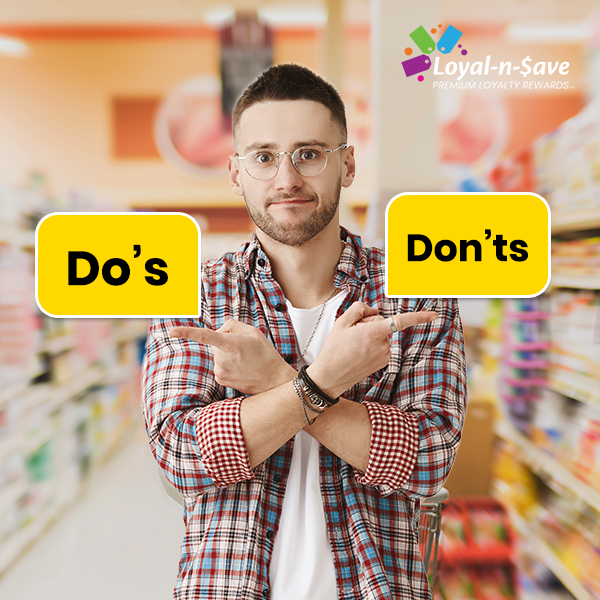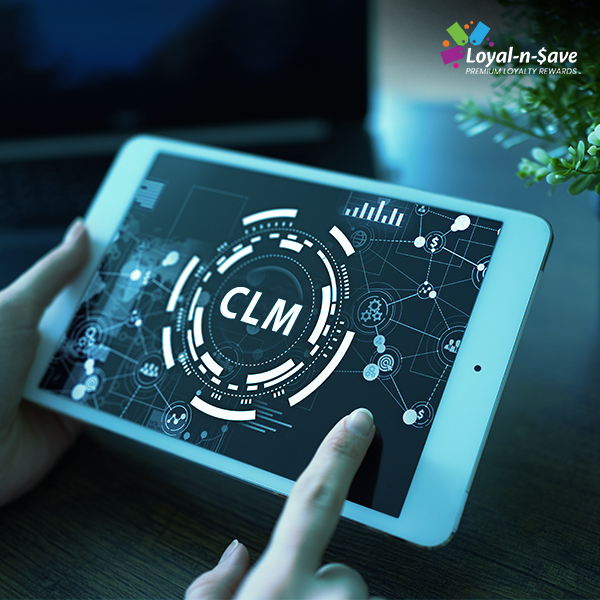How to Calculate Customer Lifetime Value to Maximize ROI!

We are all familiar with the saying – retaining customers is cheaper than acquiring them. However, the point that needs pondering is that not every customer contributes equally. Some, despite their tenure, drain resources more than they replenish them. The real question, then, isn’t just about keeping customers but strategically investing in the right customers.
Customer Lifetime Value (CLV) provides that strategic lens, quantifying a customer’s total worth over their entire relationship. It’s a bottom-line metric, unlike the often-lauded Net Promoter Score (NPS) or Customer Satisfaction Score (CSAT), which, while valuable indicators of sentiment, merely hint at future loyalty.
CLV, on the other hand, reveals tangible revenue impact, allowing you to calibrate Customer Experience (CX) investments for maximum ROI. More than that, it’s a powerful predictive tool, especially in long-term customer relationships, where a dip in CLV can signal impending attrition, a silent alarm bell for proactive intervention.
- What Is Customer Lifetime Value (CLV)?
- Types of Customer Lifetime Value Data Models
- A Simple Model for Calculating LTV (Step-By-Step)
- How to Calculate Your Return on Investment (ROI)
- How to Calculate Customer Lifetime Value (CLV)
- Why CLV Is Essential for Maximizing ROI in Business
- How to Increase Customer Lifetime Value Using Loyalty Programs
- How Loyal-n-Save Helps Businesses Improve CLV & ROI
What is Customer Lifetime Value (CLV)?
Simply put, CLV is the total revenue a business can reasonably expect from a single customer throughout their entire relationship—a holistic measure of a customer’s true worth. It’s the long game, a strategic perspective that transcends the immediate transaction. Imagine a customer who makes a one-time purchase of a $50 product versus one who consistently makes monthly $30 purchases for five years. The latter, despite smaller individual transactions, has a significantly higher CLV—a testament to the power of sustained engagement. Understanding this fundamental difference is critical. CLV allows businesses to escape the trap of short-term gains, the allure of quick wins, and instead focus on long-term customer retention, building a foundation for enduring success.
Types of Customer Lifetime Value Data Models
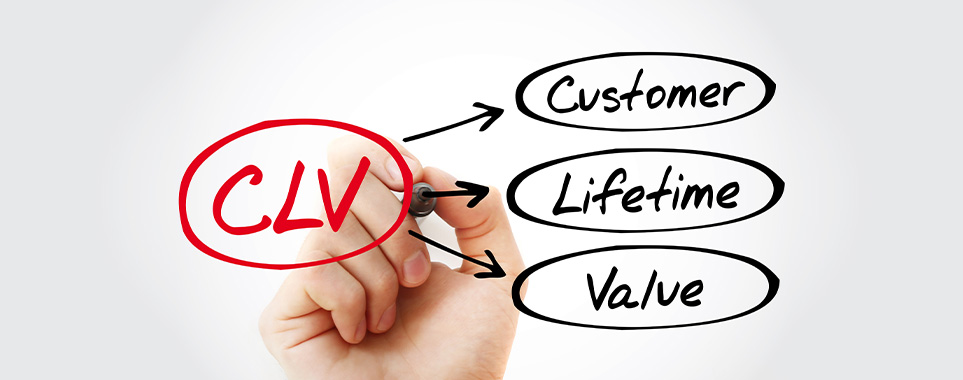
The world of CLV isn’t one-size-fits-all. Businesses employ various models to analyze and predict customer value, each with its own nuances and applications:
- Historical CLV: This model looks backward, analyzing past purchase behavior to determine a customer’s value. It’s a solid foundation, providing a snapshot of past performance, but it lacks predictive power, leaving businesses reactive rather than proactive.
- Predictive CLV: Using historical data and sophisticated statistical modeling, this model forecasts future customer value. It’s about anticipating trends, predicting behavior, and proactively optimizing customer relationships for maximum impact.
- Contractual CLV: This model is tailored for businesses with subscription-based or contractual relationships, where customer lifespan is clearly defined. It allows for precise calculations and targeted strategies to maximize revenue within the contract period.
- Non-Contractual CLV: This model applies to businesses with transactional relationships, where customer lifespan is less predictable. It requires a more nuanced approach, focusing on building lasting relationships that extend beyond individual transactions.
- Customer Segment CLV: This model segments customers based on shared characteristics, such as demographics or purchase behavior, and calculates CLV for each group. This enables highly targeted marketing and loyalty initiatives, maximizing ROI.
- Account-Based CLV: Primarily used in B2B, this model calculates the value of entire accounts, considering the complexity of business relationships. It’s about understanding the long-term potential of key accounts and nurturing those relationships for sustained growth.
Interesting Read: Different Types of Loyalty Programs: Which Is Right for Your Brand?
A Simple Model for Calculating LTV (Step-By-Step)
Calculating CLV doesn’t have to be a complex, daunting task. Here’s a simplified, step-by-step approach:
1. Determine Your Average Order Value (AOV): Calculate the average amount customers spend per purchase, providing a baseline for understanding individual transaction value.
2. Calculate Your Average Purchase Frequency: Determine how often customers make purchases within a specific timeframe, revealing the rhythm of customer engagement.
3. Estimate Your Customer Value: Multiply AOV by purchase frequency, quantifying the immediate value a customer brings within a given period.
4. Estimate Your Average Customer Lifespan: Determine the average length of time a customer remains loyal, revealing the duration of their relationship with your brand.
5. Calculate Your Estimated LTV: Multiply customer value by customer lifespan. This provides a clear, actionable picture of the long-term value each customer brings, guiding strategic decisions.
How to Calculate Your Return on Investment (ROI)
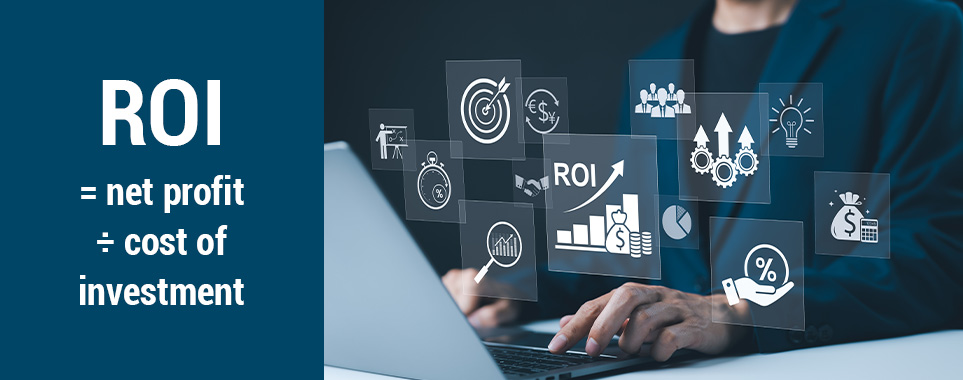
The formula to calculate the ROI is just as simple in mathematical structure, yet different entirely. The purpose of calculating your ROI is to help you understand the efficiency of an investment, for example, you want to see how efficient your new loyalty rewards program is at increasing your revenue. Typically, this formula is a way for investors—and business owners like yourself—to determine whether they are receiving enough gain to continue investing.
ROI does not measure the total amount of revenue a business generates. ROI measures which metric generated the best “return.” Phew! That was a lot of groundwork, but it was necessary to lay it down so that you’ll have ease wrapping your head around the actual formula.
ROI = net profit ÷ cost of investment
Another simpler way of looking at it is this:
ROI = (current value of investment – cost of investment) ÷ cost of investment
Bear in mind that ROI is not a financial metric, but a percentage (a ratio) and it enables you to be rational in your investment decisions. The ROI will show you the percentage return of every financial effort you make. You will be able to see if your loyalty rewards program generates a 40% return or 60% return, and if your return here is higher than other marketing efforts, you can cut unnecessary spending and pour even more funds into the marketing method that works more.
How to Calculate Customer Lifetime Value (CLV)
The purpose of increasing loyalty and customer satisfaction is to increase the lifetime of a customer. How do you Calculate Customer Lifetime Value, or CLV? At the simplest level, CLV is essentially the length of time the customer patronizes your business versus the average amount a customer spends at your business during that same time frame.

CLV = (average monthly transactions × average order value) × average retention rate in months / number of clients for the period
Watch out! You’re not finished yet! The simple equation above will grossly overestimate the value of a customer because it ignores profit, costs, and the discount rate, all of which you’re going to want to include to make your calculations as accurate as possible. An improved formula would also multiply this figure by the average gross margin. With this new formula, you will be able to tell how much profit you make from a customer rather than how much a customer spends.
CLV = ((average monthly transactions × average order value) × average retention rate in months) × average gross margin / number of clients for the period
Customer lifetime value can greatly inform your return on investment, because CLV provides significant value when it comes to marketing ROI.
This is how you use the two resulting figures you’ve gotten from your ROI calculations and your CLV calculations to stay informed and make better business decisions. We’ll show you an example with real numbers:
Let’s assume you’ve calculated your average customer acquisition cost for your company and it’s $100, but the customer spends $180 so you have a CLV of $80 ($180 – $100 = $80).
In this example, the marketing ROI equation is CLV / acquisition cost = ROI (or) $80 ÷ $100 = 80%. In other words, your marketing department has taken $100 and turned it into $180 by acquiring a new customer, which is an 80% ROI.
Why CLV Is Essential for Maximizing ROI in Business
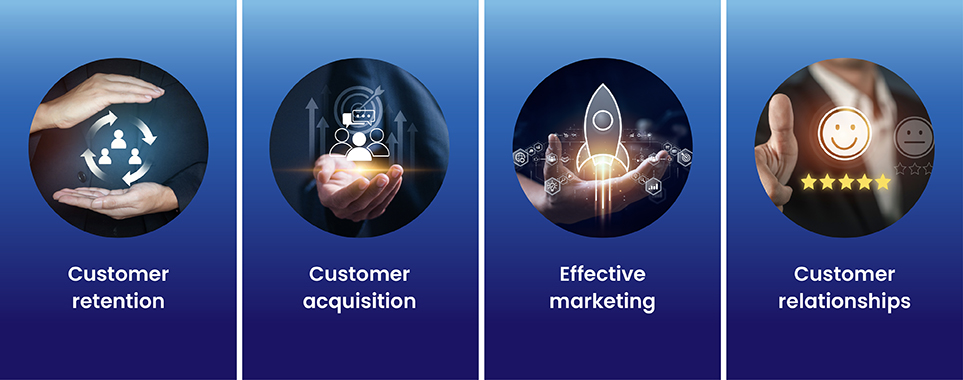
Shifting focus from mere customer acquisition to cultivating long-term, profitable customer relationships is pivotal for sustained growth. Higher CLV translates to a healthier bottom line, a more resilient business. Consider the following:
- Drive customer retention efforts: Loyal customers spend more, are less costly to retain, and act as powerful brand advocates.
- Improve customer acquisition: Understanding CLV allows for more strategic customer acquisition, focusing on high-value prospects who align with your brand’s long-term vision.
- Measure marketing effectiveness and return on investment (ROI): CLV provides a clear, data-driven metric for evaluating the long-term impact of marketing campaigns, ensuring resources are allocated effectively.
- Create and prioritize customer segments: Identifying high-CLV segments allows for targeted marketing and loyalty initiatives, maximizing ROI by focusing on the most valuable relationships.
Interesting Read: How to Pick the Best Customer Loyalty Program for Your Small Business
How to Increase Customer Lifetime Value Using Loyalty Programs
Loyalty programs are more than just points and discounts; they’re powerful tools for building lasting customer relationships and enhancing CLV. Consider these strategic approaches:
- Drive Customer Engagement via Rewards: Offer relevant, valuable rewards that incentivize repeat purchases and foster a sense of appreciation.
- Personalize the Customer Experience: Tailor rewards and communications to individual customer preferences, creating a sense of exclusivity and relevance.
- Leverage Referral and Social Sharing Incentives: Encourage customers to spread the word and expand your reach, turning loyal customers into brand ambassadors.
- Enhance Engagement with Gamification: Use game-like elements to make loyalty programs more interactive and engaging, adding an element of fun and excitement.
- Offer Exclusive Perks and Experiences: Provide unique benefits that make customers feel valued and appreciated, fostering a sense of belonging.
- Utilize Omnichannel Engagement: Maintain consistent communication across all customer touchpoints, ensuring a seamless and integrated customer experience.
Interesting Read: Loyalty Programs: A Deep Dive into Traditional and Digital Approach
How Loyal-n-Save Helps Businesses Improve CLV & ROI
Loyal-n-Save is more than just loyalty software; it’s a strategic partner in maximizing CLV and driving long-term growth. Its comprehensive features include:
- All-in-One Loyalty Solution: A robust platform for managing all aspects of customer loyalty, from points and rewards to personalized communications.
- Real-Time Customer Insights: Actionable data to understand customer behavior, preferences, and engagement patterns, enabling data-driven decisions.
- Seamless Integration: Easy integration with existing systems, such as CRM and POS, for streamlined operations and a unified customer view.
- Automated CLV Tracking: Real-time tracking of customer lifetime value, allowing businesses to monitor progress and optimize strategies effectively.
Posted on Apr 22, 2025




